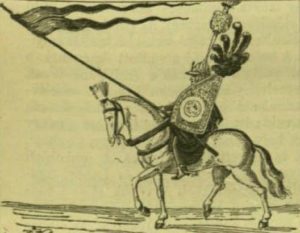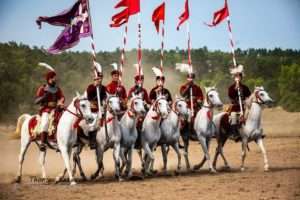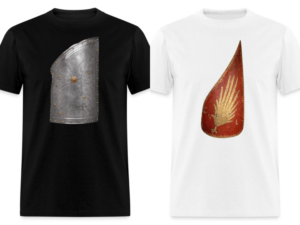Foreword: The Ancient Hungarian Horse

The golden-haired steed of our folk tales, of Hungarian folklore, did not only live in the imagination of storytellers. Contrary to popular belief, the war horses of the Hungarians were not small, but the ancestors of the modern Ahal-teke (Akhal-teke), a breed of horse from Central Asia.

The evolution of the horse breed, now called Akhal-tech, can be traced back to the Ahal Oasis, 3000 thousand years ago, in what is now Turkmenistan (so it is more appropriate to use the name Ahal instead of the Russianized form /akhal/). In the past, it was widespread over a much larger area of Central Asia (it also lived in large numbers in what is now Uzbekistan and Kazakhstan) and is also known in the literature as the ‘Turanian horse’.

From a Hungarian point of view, one of the most interesting correlations is that, as a study by the Institute of Genetics of the Biological Centre of Szeged showed, certain characteristics of DNA samples taken from the bone remains of the horse from the Bronze Age showed the most similarities with the Ahal-Teke horse among the modern horse breeds. The magnificent warhorse of our brave ancestors, the golden-haired steed of the Ahal Teke, was a horse that we brought with us from Central Asia.

Hussar Horses of Battle
According to our historians, King Zsigmond of Hungary created a new military system that was accepted by the Temesvár Diet in 1397: the landlords had to provide one mounted archer for every 20 (later 33) serfs. It is said that the Hungarian word for a light cavalryman called “huszár” (hussar) derives from this law, since “húsz” stands for 20 in the Hungarian language, while “-ár” is a suffix often used to describe trades. The following is a summary of Béres Sándor’s article in Rubicon magazine (1/2020), with some explanations by me. All credit goes to him. As a preface, here is Boldog Zoltán’s writing about the Hungarian hussars.

The Hussars
Originally from the Balkans, the hussars were light cavalrymen who, with their unusual but effective raiding style of fighting on the Turkish frontiers, soon became a valuable part of the military organization of the Hunyadi and Jagiellonian rulers, and from the second half of the 15th century, they appeared in greater numbers in the army of the Kingdom of Hungary. (My note: The Ottoman Deli riders were very similar to them.)

After the defeat at the Battle of Mohács, the Kingdom of Hungary abandoned the costly and cumbersome practice of fielding heavy cavalry. The most typical Hungarian cavalry soldier of the early modern period was the “Borderland Hussar”, who was equipped as a hussar and fought mostly as a hussar, but sometimes also took over the duties of the now-disappearing heavy cavalry in addition to the former role of light cavalry.

By the way, for a long time, they were not even called hussars in Hungarian sources of the time: they were called Hungarian horsemen, horsemen with lances, knights, light cavalrymen, and lancers in Hungarian sources, while abroad they were consistently called “husar”. The hussars gained their greatest fame in hit-and-run attacks and raids, but they were also sometimes used as the main cavalry in the front line, as the nature of the Turkish battlefield in Hungary and the fight against the main opponent, the Ottoman cavalry demanded.

The Hungarian hussars of the 16th century used equipment of Hungarian, Turkish, and Western European origin or manufacture, and even had a “heritage” of earlier cavalry armament – but many of these fighting tools were already more or less modified in design or decoration and found a place in the hussars’ arsenal in a form more in keeping with their fighting style or the Hungarian (military) customs of the time. Learn more about the hussar helmets:
https://www.hungarianottomanwars.com/armors-and-shields/hungarian-lobster-tail-helmets/

Their peaked helmets were mostly of Turkish design, with a lowerable nose guard and a snap-on neck guard; their armor, if any, was usually chain mail or even a Western-style plate breastplate; their arms were protected by a Turkish-style armor plate, sometimes a Western-style armor. The better-equipped private armies of the nobility sometimes wore very heavy armor, while most of the poorly paid cavalrymen of the frontier had at most a shield as a defensive weapon. At that time, the most common type of shield was the hussar’s shield, with its distinctive shape and springing tip, made of pine wood covered with leather, painted in color, and often decorated with a feathered swirl or even the wing of a bird of prey.

Their main offensive weapon was the “kopja” (lance), which was about 4 meters long and broke when struck – a consumable weapon, a large number of which were stored in castles or carried in carts after the cavalry. Although the head was the primary weapon, it was the saber that most identified the hussar. The Hungarian sabers of this period were curved-bladed weapons with a long crossguard and a distinctive flat, forward-facing hilt.

The hussars also used special weapons which they carried suspended from their horses’ saddles: the meter-long, three-edged, spear-like thrusting weapon, the “hegyestőr” (“koncerz” or “estoch”), or the heavy, straight-bladed cutting weapon, the “pallos”; both were “descendants” of the earlier knightly swords and evolved from the two main types of blades (spear-point or cutting). In addition, a battle pick or a feathered iron mace was sometimes used. There were also attempts to introduce firearms into the Hungarian cavalry, but this was not yet common among the hussars of the early 16th century.

There were no uniforms at that time and they wore the typical Hungarian men’s clothing of the time: “mente”, dolman and tight-fitting Hungarian trousers, with long or short – so-called “deli” – boots, with the considerable spurs of the time. They wore Hungarian felt hats decorated with feathers, as well as cloaks or even fur coats; the “kacagány” (animal skin worn over the shoulders, usually wolf or panther leather), being a more distinguished mark of rank, is much less common in contemporary pictures.

The hussars of the 16th century fought not only on the battlefield of the Turks in Hungary, but they also soon appeared as mercenaries or auxiliaries on the battlefields of Germany, Bohemia, the German Lowlands, and Poland, where they made a famous and infamous name for themselves. The Polish Hussars, which gained great historical fame, were also organized by Báthory István, who was elected King of Poland at the end of the 16th century, based on the experience of the Transylvanian forces.

Archduke Ferdinand of Tyrol, who was personally familiar with the fighting prowess of the Hungarian hussars, organized hussar tournaments at his court as a special form of the former jousting tournaments, where the participants fought against each other in Hungarian hussar armor.

Read more about the hussar lances here:
https://www.hungarianottomanwars.com/weapons/the-hussars-lance-the-kopja/
The success of the Hungarian cavalry
The success and survival of the Hungarians were because they were able to combine and effectively use the military tactics of the West and the East. Let us not forget that the ancestors of the Hungarians were nomads, all of them famous horsemen.
According to Béres Sándor, the Hungarian cavalry used different tactics against the western and eastern enemies from the 11th century. Often the same cavalry units were used as light cavalry units to trap the German heavy cavalry in the west, while the same units were used as heavy cavalry to crush the Turkish light cavalry in the south and east. They were sort of in-between in size and other characteristics compared to the western and eastern horses.

It was not because of the different armor, it was because of the horses. Hungarian horses were smaller, tougher and faster than German horses, while they were bigger and heavier than Turkish horses. We can read in Italian chronicles from the 14th century that Hungarian horses were given fodder when they were taken to the east, while they could graze on grass when they were taken to the west.
Impact and stamina
When it comes to a duel or a mass cavalry charge, the heavier horse always has the advantage. The impact can decide the battle. On the other hand, it was important to tire the enemy. If their horses could not move, but ours were not so exhausted, the victory was ours. Hungarian hussar units usually wore out the German heavy cavalry, while the same hussars kept the Hungarian heavy cavalry units from getting too tired when they fought the Turks.

The hussars took over the role of the heavy cavalry from the first clashes that preceded the battle to the pursuit after the final victory. As we can see, the strength of the horses determined the military tactics, always depending on the strength of the enemy horses.

As for the initial clashes, both the Hungarians and the Turks used different units. In the Ottoman army, these horsemen were called “csarkadzsi”. They were given better horses and their weapons were equally good for close combat and long range. They had bows and arrows and short spears called “kelevéz” in Hungarian (“dzsirit” in Turkish): a short, 90 cm long throwing spear that could penetrate armor when thrown from the saddle because the horse’s speed added to its impact. Both Hungarians and Turks used them, and cavalrymen carried several:

These cavalry units, which started the battle, consisted of small groups of horsemen. This allowed them to move quickly and capture or explore strategic points on the battlefield. They were excellent at covering the movements of the main army and diverting attention, as the Turks did at the Battle of Mohács in 1526. You can view the video of the battle of Mohács here, with English subtitles:
https://www.hungarianottomanwars.com/videos/the-battle-of-mohacs-1526/

Hit and run
Bows and arrows were mainly used against each other’s horses. However, a horse could not be killed by a single arrow. It was not easy to kill a man with an arrow. However, the “kelevéz” or “dzsirit” could pierce a plate armor or kill a horse on the first throw. The use of the javelin required a lot of practice, as these lighter cavalrymen could easily be defeated if they missed their target. Note that the Hungarians had brought this weapon from the steppes and were masters of it, as were the Turks.

Cavalry Charge and Melee

Heavy and light Hussars
The hussar horses were heavier than the Turkish ones, but lighter and stronger than the western ones. Thus, the tactics used depended on the size and strength of the horses. As for the hussar units, we have to note that the early Hungarian hussars were not heavily armored cavalrymen, their armor became heavy or semi-heavy by the middle of the 16th century. Nevertheless, there were lightly armored and heavily armored hussars, depending on their task.

It was Prince Báthori István (Stefan) of Transylvania, crowned king of Poland and Lithuania, who introduced the heavy hussar cavalry to Poland and Lithuania in 1576. At that time, the Hungarian hussars were equipped with a pistol, which gave them an advantage over the armored Sipahi horsemen of the Ottoman Empire, who despised these firearms at that time. In Poland, Báthori lengthened the lances, took away their shields, and added more armor. The fashion of wearing wings was preserved for a longer time in Poland, unlike in Hungary. Not to forget the Ottoman Deli riders who also wore wings.

The heavy hussars became the perfect shock cavalry, while the light hussars were perfect for raiding, dueling, scouting, and reconnaissance, wearing down the western cavalry and overrunning the Ottoman cavalry on their larger horses. As for the Ottomans, their heavy cavalry was the Sipahi cavalry.

Horses in large units
The battles were fought by huge cavalry units (their ratio to the infantry was well over 60%) under the central control of their commanders. At the Battle of Mohács in 1526, the largest cavalry units were deployed on the wings of both the Christian and Muslim sides. These wings were composed of smaller cavalry units following their “flag”. (In Hungarian they were called “zászlóalj”, meaning “fighting men under one flag”). Within these battalions, there were even smaller groups of horsemen, the soldiers of the larger lords or the men-at-arms of the Hungarian nobility.

If we look at these groups from the horse’s point of view, the “wing” of the army was not a solid social group, so it was extremely difficult to maneuver with it, as its cohesion was very limited. The control of the horses required great attention if the commanders wanted to maintain the order of battle.

Fortunately, the horses coming from the same Hungarian county or the same Ottoman Sandjak area were a community from the beginning, or they were “sniffed together” during the march to the battlefield. As a result, the horses usually moved together under one “flag” and tried not to separate from each other. They tolerated each other better and didn’t want to join other groups of horses.
According to Béres Sándor, the artificially created huge crowd of horses contained several “natural” groups of horses, and in case of confusion, it would have been very difficult to reunite them, as the horses would have tried to separate from each “foreign” group of horses. When the two wings clashed, whoever was able to keep his “flags” together gained the upper hand in the battle, a great advantage over the enemy by breaking the links between the enemy’s “flags”.

The dominant horses
The dominant horses played an important role in leading the charge. They were ridden by the dominant soldiers. Both these horses and the officers were at the top of the hierarchy. The other horses saw them as natural leaders and followed them.
Before going to the battlefield, there had been a constant struggle for hierarchy among the horses, and a certain order of rank had taken shape. It was very important for the human commanders to ride faster and stronger dominant horses because all human communication was limited in the melee. The Hungarians also rode stallions, unlike the Ottomans who preferred geldings. Riding or using a mare for other purposes, such as pulling a cart or carrying a load, was considered a disgrace by the Hungarians.
Preferred tactics
As for the Turks, they anticipated the disintegration of their cavalry wing. As a result, they were able to maneuver much more easily and attack the side or rear of the Hungarian heavy cavalry, which always tried to maintain its closed battle order. However, the Hungarian light cavalry tried to respond in kind. If the Hungarian light cavalry was able to control the movement of the Ottoman light cavalry units, in this case, the Hungarian heavy cavalry was able to crush the enemy who had nowhere to run and could not withstand the heavily armored attacks. To do this, however, the heavy cavalry had to be flexible enough. They had to maintain their order of battle at all times so that they could make the necessary turns in unison.

Forget the preconception that the heavy cavalry units were just a bunch of undisciplined daredevil knights who rushed to their unknown fate in a huddle. Dzselálzádé Mustafa, the Ottoman chronicler, described the Hungarian heavy cavalry as follows:
“The Hungarian nation has a habit in battle, namely that 30-40,000 monsters dress in iron and steel and cover their horses in the same (…) their charge cannot be hindered by cannons or rifles, no weapon can block their advance, their carcass cannot be pierced by a lance and cannot be cut by a sword, arrows would not wound them. There is only one way to oppose them, to split to the right and left before their battle order and attack them in the rear, then we will have the celebration”.

According to Brodarics István’s chronicle, the Hungarian heavy cavalry was deployed in rows and columns in the battle of Mohács to maximize the ability to carry out the maneuvers described above. Each soldier had an assigned place in his row or column and was allowed to leave it only in special cases. The existence of these formations proves that contemporary commanders expected their units to remain together in battle for a long time.
These formations were quite flexible and individual soldiers or units could be easily replaced or changed by the officers. Moreover, these columns could easily attack in several directions, as they were 1-3 horsemen deep and had enough space on all sides to turn wherever they wanted. Even if the columns and ranks disintegrated, the men-at-arms that made up a given lord’s or bishop’s party could stay together and fight effectively against the enemy’s lighter cavalry.

Horses in the Battle of Mohács
So far we could draw two main conclusions, namely that Hungarian horses were bigger and stronger than Turkish ones, and faster and tougher, but smaller than Western horses. As a result, the semi-heavy hussar cavalry could be quite effective against both enemies with a different strategy. On the other hand, we were convinced by Béres Sándor that the Christian cavalry was very well organized even in the melee, so it is not true that the Christian knights ran madly into the battle.

Now let’s talk about creating panic among the enemy and taking advantage of the chaos. Finally, Béres will tell us the secret of the Ottoman cavalry’s success in the Battle of Mohács in 1526.
Making panic
At Mohács, the action that decided the battle was the confrontation of huge cavalry units. The goal of the Hungarian heavy cavalry was to defeat the Sultan’s cavalry before their horses got tired so that they would have enough strength to defeat the Turkish infantry right after. So their first objective was to eliminate the Sipahi horsemen defending the vulnerable side of the Sultan’s infantry.

In the case of a cavalry clash, the primary goal is always to create panic, which would quickly spread like a sudden emotion. The instinctive reaction of the horses would always be to flee. Contemporary sources call this “megszalasztás”, which means “to make the enemy flee”. To achieve this, the knights had to strike a mental blow and break the trust between the horses and their riders by provoking fear of death.

Horses are not tools or companions of riders, they are rather parts of each other. The horse gives its strength and speed in exchange for the rider’s sense of security. Horses count on their riders to lead them to safety and to feed them. On the other hand, the rider, seeing this infinite trust, also relies spiritually on the horse. When this mutual trust suddenly breaks down, we call it panic. The more surprising a cavalry charge is, the more successful it can be. Let us not forget that the attacker has the advantage because his mental state is far higher than that of the enemy who receives the attack, even if the enemy launches a counterattack a heartbeat later.
You can watch the Battle of Mohács here, with English subtitles:
https://www.hungarianottomanwars.com/videos/the-battle-of-mohacs-1526/

In panic, the warrior and his horse can use up their energy resources very quickly, which is why some of them “freeze” and cannot move. At Mohács, the Hungarian cavalry could hardly wait to attack, while the enemy regarded such heavy cavalry charges as an “attack of iron-clad monsters”. In the Ottoman army, the fresh soldiers were told tall tales about the Christian heavy cavalry, while in the Hungarian army, the soldiers boasted that all the Ottoman soldiers were just untrained rabble of peasants.

If there are too many horses that aren’t used to their riders and the other horses around them, panic can spread very quickly. In panic, the fighting value of the enemy is very low, regardless of their numbers. The Hungarian cavalrymen had another advantage: they rode stallions, while the Turks mostly used gelded horses. The Hungarians used snaffles and spurs to control their stallions, allowing them to perform more complex movements. On the other hand, the Ottomans mostly used less effective horsewhips.

The role of the Hussars
The Ottoman cavalry would not have waited for the Hungarian heavy cavalry to attack by staying in one place. The target had to be set and the semi-heavy or light hussar horsemen had the task of fixing the Turks to stay there.

The hussars were armed with lances and were similar to the sipahies, except that they had bigger horses. The Turks could not make an organized maneuver to evade them because the hussars were as fast as they were and would have caught up with them. Knowing this, the Sipahies launched a counterattack. If the Hussars could draw the Sipahies into close combat and perhaps even disrupt their formation, the heavy cavalry charge could begin. As a result, the heavy cavalry could isolate and overrun the Sipahi units one by one. If the Sipahi fled, the hussars would have to chase them.

Scattering the infantry
The heavy cavalry would have remained intact on the battlefield, on relatively fresh horses. Now their final task was to eliminate the Ottoman infantry that had been abandoned by their cavalry. Only the best infantry could withstand the onslaught of armored heavy cavalry, and even the Janissaries could not always do so.

The knights, deployed in wedge formations, attacked the corners of the infantry units, as that was their weakest point. If they could penetrate deep enough, they had a good chance of “exploding” the infantry formations.

The infantrymen could defend themselves by wounding or killing the horses, but even an injured or dying animal could be very dangerous if it fell among them.
The Ottoman tactic
The Turks knew all this, so they took care to use the fastest and strongest horses, “which could gallop at full speed day and night for a whole week,” according to the chronicle of Magyarországi György.

So the Turks tried to lure the Hungarian cavalry into charges and evade them, or make an organized retreat. They often trapped charging heavy cavalry in front of cannons or hidden infantry units armed with halberds and muskets. It was risky because the retreat or evasion maneuvers could easily turn into dangerous situations if the Hungarians were able to engage them. There was always the possibility of panic and chaos.
The problem at Mohács
Unfortunately, the hussars of the Hungarian right wing, who successfully scattered the Rumelian Sipahies, didn’t pursue the enemy far enough. As a result, the Sipahies were able to regroup and return just in time for General Tomori’s heavy cavalry to attack the Ottoman infantry in the manner described above. Soon the horses of the heavy cavalry became too tired as they had to perform additional maneuvers against the attacking Sipahies.

Final thoughts
Both the Ottomans and the Hungarians used different ways of breeding and preparing their animals. The Hungarians had developed agriculture and were able to feed their horses with grain fodder, but at the same time, they raised the foals in the open air. As a result, the Hungarian horse was a war horse that grew up outdoors but was fed regularly. In the West, the horses did not grow up freely in the fields, while in the East they were not fed properly. All these elements are important to understanding the difference between the cavalry tactics of the East and the West: and only this can make us fully understand why the Hungarian hussars were so successful, combining the advantages of both points of the compass.

Further source:Szócsinné Vitéz Léber Ottilia
Dear Readers, I can only make this content available through small donations or by selling my books or T-shirts.
If you like my writings, please feel free to support me with a coffee here:
You can check out my books on Amazon or Draft2Digital, they are available in hardcover, paperback, or ebook:
https://www.amazon.com/dp/198020490X
or at https://books2read.com/b/boYd81


My work can also be followed and supported on Patreon: Become a Patron!http://Become a Patron!


https://hungarianottomanwars.myspreadshop.com/all

